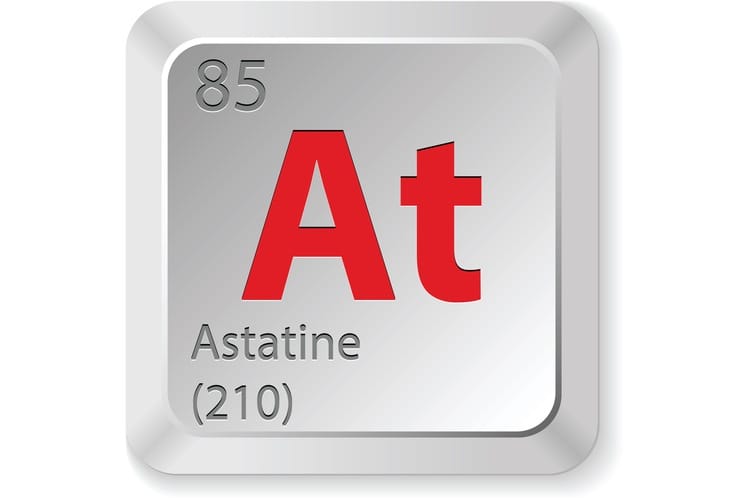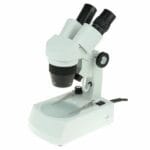Get ready for a wild ride into the weird and wonderful world of astatine! This super-rare element is like a hidden treasure, and we’re going to dig into all the juicy facts that make it so special. From its crazy scarcity to its surprising potential uses, we’ll explore the secrets of astatine and unravel the mysteries surrounding this elusive substance. Trust us, this scientific adventure is about to get seriously fascinating!
Fun Facts about Astatine
Ever heard of Astatine? It’s like the hidden gem of the periodic table – super rare and with some pretty cool quirks. Let’s dive into some fun facts about this elusive element:
- Astatine is incredibly rare – we’re talking really rare. Scientists estimate there’s less than an ounce of it spread throughout the Earth’s crust at any given time, making it the rarest naturally occurring element on our planet!
- Astatine is radioactive. This means its atoms are constantly breaking down and releasing energy in the form of radiation. While that might sound a bit intimidating, scientists believe it could also hold the key to some incredible medical breakthroughs.
- Astatine could be the future of fighting cancer. Researchers are exploring its potential in nuclear medicine, particularly for targeted cancer therapies. Imagine a treatment that zeroes in on cancerous cells with pinpoint accuracy – that’s the promise astatine holds.
- Even astatine’s origins are shrouded in mystery. While it naturally occurs in tiny amounts during the decay of other radioactive elements, like uranium and thorium, most astatine used in research is actually created artificially in labs.
- Astatine’s instability is part of what makes it so fascinating. Its atoms have a hard time holding themselves together, which is why it’s so radioactive. But this instability also makes it a challenge to study, and scientists are still working to unlock all its secrets.
There’s still so much we don’t know about astatine. But with each new discovery, this mysterious element reveals more of its fascinating nature, leaving us to wonder what other surprises it holds.
What are 3 uses of astatine?
Okay, so we’ve talked about how incredibly rare astatine is. But just because there isn’t much of it hanging around doesn’t mean it’s not super interesting, especially for scientists! This radioactive element is actually showing some real potential in different fields, particularly medicine. Let’s dive into that, shall we?
- Fighting Cancer with a Tiny, Powerful Punch: We usually think of radioactivity as a dangerous thing, and it can be. But scientists are incredibly clever, and they’ve figured out how to use astatine’s radioactivity for good. Astatine-211, a specific type of astatine, delivers a focused blast of radiation – like a tiny, powerful punch – directly to cancer cells. This process, called targeted alpha particle therapy, is exciting because it aims to minimize damage to the healthy cells nearby.
- Getting a Glimpse Inside the Body: Astatine has some other neat tricks up its sleeve too. Remember how we talked about its short half-life? Well, that actually makes it pretty useful for medical imaging. Doctors can attach astatine to glucose molecules, the stuff our bodies use for energy. These tagged molecules then help us see how tumors are using energy and how they’re responding to treatment. And because astatine disappears relatively quickly, it’s less likely to stick around and cause unwanted side effects.
- A Helper Element in Disguise: Astatine-211 isn’t just useful on its own – it’s also a team player! Scientists use it to produce other types of radioactive materials, called radioisotopes. These radioisotopes are like specialized tools in a doctor’s kit, helping them diagnose and treat a whole range of medical conditions, including (you guessed it!) cancer.
What We’re Still Learning
While astatine shows a lot of promise, it’s important to remember that research is ongoing. Scientists are still working to understand its full potential and develop new ways to use it safely and effectively. There’s still a lot we don’t know about astatine, but that’s what makes it so fascinating!
What are 5 facts about astatine?
We’ve already established that astatine is pretty elusive, but let’s delve a bit deeper into what makes this element so fascinating.
- Finding astatine is like searching for a needle in a haystack, except the haystack is the entire Earth and there’s only a tiny bit of needle. Scientists estimate that less than a single gram of astatine exists throughout the Earth’s crust at any given moment. This rarity makes it incredibly difficult to study and even harder to put to practical use.
- Astatine is a heavyweight champion… at least when it comes to halogens. In the world of chemistry, halogens are a group of elements with similar properties. Think fluorine, chlorine, bromine – those sorts of characters. Astatine, with an atomic weight of 209, tips the scales as the heaviest of the bunch. This weight difference isn’t just about bragging rights; it actually gives astatine some unique characteristics compared to its lighter siblings.
- Astatine has a bit of a radioactive personality. This means that it’s constantly emitting energy in the form of radiation. Now, before you picture astatine glowing green in the dark, keep in mind that this radioactivity is on a microscopic level. However, it does make astatine tricky to handle – scientists need special equipment and precautions when working with it. On the flip side, this radioactivity also makes astatine potentially valuable for certain medical treatments.
- Astatine is the ultimate fleeting friend. Its isotopes, which are like slightly different versions of the element, are incredibly unstable and decay rapidly. The most stable isotope, astatine-210, has a half-life of just 8.1 hours. To put that into perspective, imagine baking a cake that disappears almost completely in less than a day – that’s how quickly astatine decays! This rapid decay makes it even more difficult to study and utilize.
- Astatine could be a secret weapon in the fight against cancer. Because of its radioactivity and short half-life, scientists are very interested in using astatine for a type of treatment called targeted radiation therapy. The idea is to use astatine-211, one of its isotopes, to deliver a concentrated dose of radiation directly to cancerous cells while minimizing damage to surrounding healthy tissue. It’s still in the research phase, but there’s hope that astatine could one day become a powerful tool for treating cancer.
In a nutshell: Astatine is a rare, heavy, radioactive element that’s difficult to study but holds immense potential for medical applications. Ongoing research continues to unravel its mysteries, suggesting that this elusive element may one day play a significant role in fields like medicine.
How did astatine get its name?
So, we’ve been talking about this really cool element, astatine. But have you ever wondered how it got its name? It’s actually a pretty interesting story! You see, scientists noticed right away that this element was super unstable – like, it decayed really quickly. They needed a name that reflected that, and they found it in the Greek word “astatos.” It means “unstable,” which is a perfect fit, right?
And if you’re thinking, “Hey, astatine sounds a lot like fluorine, chlorine, bromine…” you’d be right on the money! That “-ine” at the end is a big clue – it’s the naming convention for all the elements in the halogen group. It’s like a secret code telling scientists, “These elements share some similar traits.”
Now, here’s the thing about astatine: it’s incredibly rare. We’re talking teeny, tiny traces found naturally in the Earth’s crust. But don’t let its scarcity fool you! This element is mighty interesting, especially in the medical field. Because of its radioactive properties, scientists believe it could be a game-changer for things like cancer treatment. There’s still a lot we’re learning about astatine, but its unique properties have sparked all sorts of research, not just in medicine, but also in areas like nuclear and organic chemistry. It’s like a tiny element with enormous potential!
Why is astatine so rare?
So, we’ve established that astatine is pretty hard to come by. But why exactly is it such a rare bird in the world of elements? Well, picture this:
- Astatine’s origin story is all about decay. You see, it’s not like some elements that just hang out in the Earth’s crust, readily available. Astatine prefers to make a grand entrance by appearing as a result of the radioactive decay of heavier elements, like uranium and thorium. The thing is, this decay process doesn’t happen very often. This means only teeny, tiny amounts of astatine ever see the light of day naturally.
- Making astatine in a lab is like trying to assemble a puzzle with pieces that disappear. It’s not impossible, but it’s definitely not easy! Scientists can artificially create astatine, but the process is super complicated and only yields a smidgen of the element.
- Speaking of disappearing, astatine’s isotopes are the masters of vanishing acts. These isotopes are incredibly unstable and decay rapidly. To put it into perspective, the most stable isotope, astatine-210, has a half-life of just 8.1 hours. That means every 8 hours or so, half of your astatine sample is gone!
- To call astatine scarce in the Earth’s crust is a massive understatement. Scientists estimate that at any given time, there’s less than a single gram of this elusive element hanging around within our planet’s crust. That’s less than the weight of a paperclip! This extreme rarity makes astatine one of the most elusive and least understood elements on the periodic table.
In a nutshell: Astatine’s rarity is a combination of its unusual birth through radioactive decay, the challenges of creating it artificially, its incredibly short lifespan, and its almost non-existent presence in the Earth’s crust. It’s a fascinating element that continues to intrigue scientists, and further research might reveal even more about its properties and behavior.
Can you touch astatine?
So, we’ve talked about how incredibly rare and radioactive astatine is. But let’s get down to the real question: could you actually reach out and touch this elusive element? Well, the answer is a big, fat no. And it’s not just a matter of it being a bit dangerous – touching astatine would be like holding onto a tiny, radioactive bomb.
The thing is, astatine is unbelievably unstable. It decays super quickly, throwing off harmful radiation faster than you can say “periodic table.” Even the tiniest amount of astatine would generate so much heat from its radioactive decay that it probably wouldn’t even exist as a solid; it would likely vaporize instantly.
Now, scientists who study astatine have to use some pretty ingenious methods to handle it. They use specialized equipment and work in controlled environments to conduct their research from a safe distance. They’re basically playing a super careful game of radioactive catch-up, always working against astatine’s rapid decay.
So, while the idea of touching astatine might spark curiosity, the reality is that it’s just too dangerous. It’s a reminder that some elements, while fascinating, are best admired from afar. After all, in the world of chemistry, some things are better left untouched!
How old is astatine?
We’ve already talked a bit about astatine, but now let’s dive a little deeper into what makes this element so unique. Discovered back in 1940 by a trio of clever scientists named Corson, MacKenzie, and Segrè, astatine is a relatively new discovery in the grand scheme of scientific understanding.
Astatine is the heaviest of the halogen elements. These scientists decided to call it “astatine” after the Greek word “astatos,” meaning “unstable,” because this element is constantly changing, always on the move, decaying quickly due to its radioactive nature.
Speaking of rarity, if you gathered up all the astatine on Earth at this very moment, you’d probably end up with a measly 25 grams – that’s less than an ounce! This scarcity is mainly because astatine isn’t produced in large quantities naturally.
Adding to its mystique is its incredibly short half-life – a mere 8.1 hours! This means that within that short time frame, half of the astatine you started with would have transformed into other elements. It’s like a fleeting shadow, here one moment and gone the next, making it quite a challenge to study and understand.
But don’t let its elusiveness fool you. Despite its rarity and fleeting existence, astatine holds great promise, especially in the medical field. Imagine using its radioactivity to target and dismantle cancer cells with pinpoint accuracy, while leaving healthy tissue unharmed. That’s the kind of potential astatine possesses!
However, there’s still much we need to uncover about this enigmatic element. Its scarcity and short lifespan present significant hurdles in research. But scientists are a determined bunch, always seeking new ways to overcome challenges and unlock the secrets that astatine holds.
As research progresses, who knows what other remarkable properties and applications we might uncover about this intriguing element!
Is Astatine Lethal?
So, we’ve established that astatine is this super rare, unstable element that practically vanishes as quickly as it appears. But the big question is, can it actually hurt you? The short answer is: yeah, it’s pretty likely. Astatine is highly radioactive, and that spells trouble for living things.
Think of it like this: radioactivity is basically unstable atoms throwing off particles and energy, trying to find a more stable state. When those particles interact with your body’s cells, they can cause some serious damage to your DNA. And damaged DNA is how you get things like cancer and other health problems.
Now, you’re not going to stumble across a chunk of astatine just lying around. It exists in such tiny amounts that scientists have a hard time even studying it! But, because it’s a halogen (like chlorine and iodine), it tends to accumulate in certain parts of the body, particularly the thyroid gland. And guess what? The thyroid is super sensitive to radiation.
Here’s where things get interesting: while astatine’s radioactivity makes it potentially dangerous, scientists are also looking at it as a possible weapon against cancer. They’ve found that because it can target specific areas (like that thyroid we talked about), it might be used to deliver highly focused radiation treatment to tumors, leaving healthy cells relatively unharmed. It’s still early days, though, and more research is needed to figure out if the benefits outweigh the risks.
Here’s the bottom line: Astatine’s rarity means most of us will never encounter it, but its radioactivity makes it a double-edged sword. It’s a potential health hazard, yes, but it also holds promise for medical breakthroughs. It’s a perfect example of how something can be both fascinating and a little bit scary at the same time, and it reminds us that science is full of surprises!
What is the Rarest Element in the Human Body?
So, we’ve talked about some of the elements in our bodies, but get this – there’s one so rare it practically plays hide-and-seek! We’re talking about astatine, a truly mysterious character in the world of elements.
Imagine something so scarce that scientists believe there’s only about an ounce of it scattered throughout the entire Earth at any given time! That’s astatine for you. Why so rare? Well, it’s highly radioactive, which means its atoms are constantly breaking down into other elements. Talk about a fleeting existence!
But here’s the kicker: even though it’s incredibly rare, astatine still finds its way into our bodies. As a halogen, it tends to hang out in certain spots like the thyroid gland, lungs, spleen, and liver. Now, before you panic, the amounts are absolutely tiny, but it does make you wonder, doesn’t it? What’s this elusive element doing in there?
One of the things that makes astatine so intriguing is that it’s a bit of a rebel in the world of halogens. While its halogen siblings prefer to be non-metals, astatine shows some metallic tendencies.
Scientists are particularly excited about astatine’s potential in medicine. Because of its radioactivity, it could be used in targeted cancer therapy. Imagine this: delivering a powerful punch of radiation directly to cancer cells, leaving healthy cells unharmed. Of course, this is still in the research phase, but the possibilities are pretty amazing!
Here’s the thing about astatine:
- It’s like the ghost of the periodic table – super rare and hard to find.
- Its radioactive nature makes it both a challenge to study and a potential superhero in medicine.
- It bends the rules of what a halogen “should” be, showing off some metallic characteristics.
Astatine is a fantastic example of how much we still don’t know about the elements that make up our world. It’s a reminder that scientific discovery is an ongoing journey, full of surprises and endless possibilities!
What is the most expensive element?
So, we’ve talked about some pricey elements, but now let’s get to the big leagues. There’s some debate on exactly which element is the most expensive, but the title of “most expensive naturally occurring element” likely goes to astatine. This element is like that rare, super expensive collectible that everyone wants but almost no one has. Why? Well, it’s incredibly scarce and has some quirky properties that make it both fascinating and a tad dangerous.
Think of it this way: if you gathered all the astatine on Earth, you’d probably end up with a lump smaller than a sugar cube! That’s because it’s ridiculously rare, even rarer than elements like gold or platinum that we usually think of as precious. Scientists estimate there’s only about an ounce of naturally occurring astatine in the Earth’s crust at any given time. Talk about a limited edition!
But here’s the thing about astatine: it’s not just rare, it’s also radioactive. And not the “glow-in-the-dark” kind of radioactive. We’re talking about serious radioactivity that requires specialized equipment and facilities to handle safely. This inherent danger adds another layer of complexity and cost to working with astatine.
Now, you might be thinking, “If it’s so rare and dangerous, why even bother?” Well, astatine has some pretty remarkable properties that make it incredibly valuable for research and potentially revolutionary medical treatments.
One of its most promising applications is in targeted cancer therapy. Imagine this: using astatine’s radioactivity like a microscopic guided missile to precisely target and destroy cancer cells while leaving healthy tissue relatively unharmed. It’s still in the experimental phase, but the potential is huge.
Other potential uses for astatine include diagnostic imaging in nuclear medicine and even furthering our understanding of nuclear processes. Basically, this element is a scientific gold mine waiting to be fully explored.
Of course, all this potential comes at a steep price. The combination of its rarity, radioactivity, and the complex processes required to produce even tiny amounts make astatine ridiculously expensive. We’re talking potentially millions of dollars for a minuscule amount.
So, while you probably won’t find astatine in your everyday life (and you wouldn’t want to!), it’s undoubtedly one of the most fascinating and potentially groundbreaking elements out there. It’s a powerful reminder that the most valuable things are often the rarest and most challenging to obtain.
Could astatine help treat cancer?
One of the most interesting things about astatine is that it seems to be drawn to cancerous cells. This has gotten researchers really excited because it could be a game-changer in the fight against cancer. They’re currently studying something called “targeted alpha particle therapy,” which basically uses astatine’s radioactivity to deliver a precise dose of radiation right to the tumor cells. The goal is to destroy the cancer without harming the surrounding healthy tissue.
The problem with scarcity
While the potential of astatine is huge, there’s a big obstacle: it’s incredibly scarce. We’re talking trace amounts found naturally on Earth. This makes obtaining enough astatine for research and potential medical use really, really difficult. Plus, there’s the added challenge of its radioactivity, which means handling it requires special precautions and equipment.
Where does this leave us?
Astatine is a bit like a rare gem that’s still being polished. We’re just starting to understand its properties and how they might be useful. It has the potential to revolutionize cancer treatment, but we need to overcome the hurdles of its scarcity and radioactivity. Scientists are actively researching ways to produce astatine artificially and develop safer handling techniques. It’s a rapidly developing field, and who knows what breakthroughs the future holds?
In a nutshell:
- Astatine shows promise in fighting cancer, particularly with targeted alpha particle therapy.
- However, its extreme rarity makes research and potential applications very challenging.
- Scientists are working hard to find ways to produce and use astatine safely and effectively.
Did you know that the asthenosphere is a layer of the Earth’s mantle? It is located between the lithosphere and the mesosphere. The asthenosphere is composed of solid rock that is under high pressure and temperature. This causes the rock to behave like a plastic, and it can flow over long periods of time. For more fascinating Earth facts, check out these facts on the asthenosphere. Speaking of fascinating and a bit scary, concussions are a common head injury that can have a variety of symptoms, including headache, dizziness, nausea, and vomiting. Learn more about these injuries by reading these fun facts about concussions.
- Unveiling Bernhard Caesar Einstein’s Scientific Achievements: A Legacy in Engineering - July 15, 2025
- Uncover who is Jerry McSorley: CEO, Family Man, Business Success Story - July 15, 2025
- Discover Bernhard Caesar Einstein’s Scientific Contributions: Unveiling a Legacy Beyond Einstein - July 15, 2025















